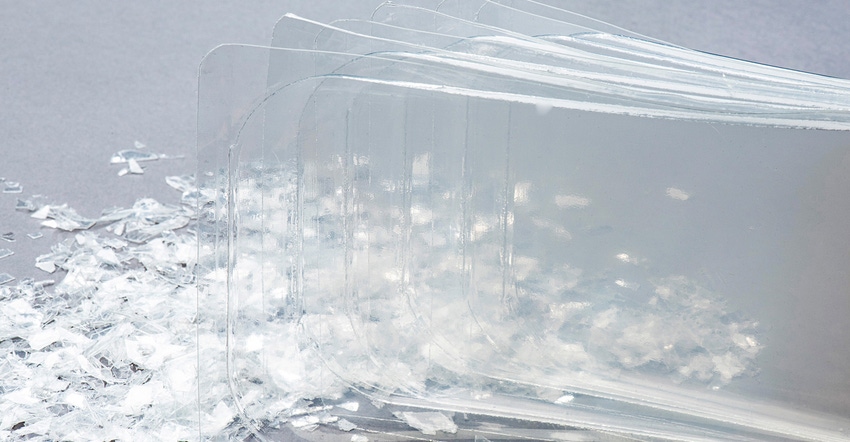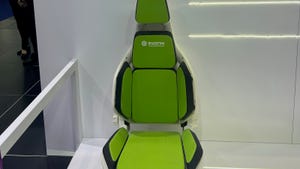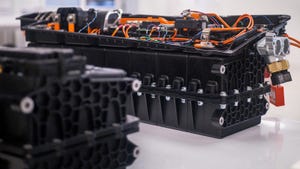BASF, Krones, Südpack, and Tomra nail it: A recycling project for multilayer PET trays uses existing mechanical recycling infrastructure.

An ambitious, collaborative project of BASF, Krones, Südpack, and Tomra Recycling Sorting demonstrates that PET-based multilayer packaging can be delaminated and recycled on an industrial scale using existing mechanical-recycling infrastructure.
To prove their concept, the partners used multilayer packaging material with layers of PET and polyethylene (PE), separating the material into the two components and then mechanically recycling the plastics.
In the first industrial trial of the process, conducted at a Krones pilot plant in Flensburg, Germany, the companies completely separated up to 69% of the PET and PE and partially separated an additional 12%.
The participation of leading companies from different parts of the plastics and recycling value chain imbued the project with insight into the challenges of recycling multilayer packaging, which has historically been difficult to recycle.
Multilayer packaging recycling, step by step.
In the project’s first phase, in 2021, Tomra performed the initial sorting trials using PET/PE trays manufactured by Südpack. The trays incorporated a debonding adhesive developed at BASF.
To make the tray material, Südpack leveraged its expertise in lamination — specifically water-based lamination — to develop PET/PE films that could be separated by caustic hot washing. Südpack manufactures high-performance packaging films for food, nonfood, and medical products.
Next, to test how well these recyclable trays could be culled from mixed packaging, Tomra used its near infrared (NIR) Autosort technology to sort the recyclable multilayer packaging from a mixture of recyclable and nonrecyclable trays.
The NIR sorting equipment detected the multilayer packaging made with BASF’s debonding adhesive, proving that multilayer trays can be sorted out of a waste stream for redirection into recycling.
The next step was to delaminate the PET/PE films into layers. Krones’ pilot plant conducted trials in mid-2022 to test the efficacy of separating laminated PET/PE films into single layers on an industrial scale. Krones sells washing and decontamination equipment for recycling PET packaging into flakes that can be used to produce new containers.
To delaminate the multilayer packaging, Krones used a standard hot-washing process commonly used in PET recycling. The approach was successful, resulting in PET and PE that could be reused, separately, as monomaterials.
Role of mechanical and chemical recycling.
After separation, the materials were recycled using existing mechanical recycling technology. Going forward, either mechanical or chemical recycling potentially could be used, depending on the packaging application for the recycled PE and PET.
“The separated multilayer PET was mechanically recycled. First results of the pilot test indicate that the PET could be reused for food-contact applications," Kresimir Cule, commercial marketing industrial adhesives, BASF, tells us. "The PE obtained in this process could be used directly for non-food-contact applications."
To use the recycled PE for food packaging, “chemical recycling is necessary. Further tests [on this] will be carried out during the project,” Cule adds.
Fine-tuning layer separation during mechanical recycling.
BASF’s water-based Epotal adhesive played a key role in the project, enabling easy separation of the PET and PE layers for recycling without sacrificing adhesive strength in the multilayer packaging. The initial industrial trial, and lab tests before that, proved that films made with the adhesive can be easily delaminated.
However, the collaboration partners believe they can improve the process of separating the PET/PE layers by implementing some additional modifications, such as adjusting the size of the flake particles and/or adding more friction during washing.
BASF reports that the collaborative work is ongoing, with emphasis on boosting the recycling rate and the quality of recycled materials.
“The cooperation partners are now working on further optimizing the approach — process parameters, adhesive — to improve the recycling rate,” Cule says. “Next steps are, for example, the further investigation and testing of the quality of recycled PET and PE.”
Cule adds, “The intention of the cooperation project is to stimulate a general discussion within associations and the whole value chain and show them how the approach to multilayer recycling can be implemented in the future.”
The partners’ new process for separating multilayer packaging makes these materials recyclable under the terms of the European Commission’s Packaging and Packaging Waste Regulation (PPWR). In the European Union, virtually all packaging will need to be recyclable by 2030.
About the Author(s)
You May Also Like




